If you are thinking about a career at sea and choose to study its advantages and deficiencies you will discover quickly enough that high earnings are not guaranteed to all maritime professionals. You can improve your earnings by developing your marine career, but some seamen face insurmountable discriminative issues one can do little about.
Today Google suggests tons of articles illustrating gender salary gaps in shipping; it is a hot topic at present; but we were wondering if the maritime industry have conquered a pay discrimination on the nationality ground to tackle another social problem so confidently?
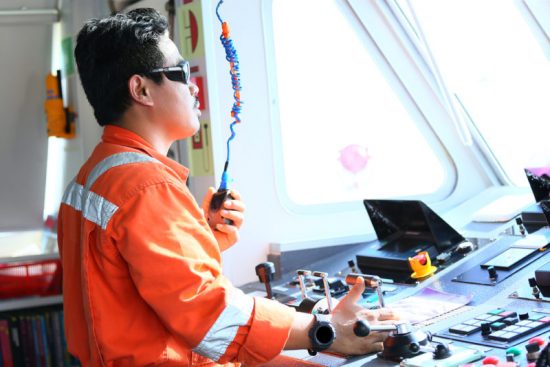
Tendency to Discrimination
As it turns out it has not. There are still some yawing pay gaps between seafarers from different countries. The key tendencies are as follows:
- The highest wages are paid to the US and EU top officers working in the offshore and oil&gas industries;
- Salary rates of non-EU, Indian and Asian officers are compatible.
- Earning discrimination is seen most in the lower ranks. For instance, Asian deck cadet on an oil product tanker can be paid around USD 400 per month; while US deck cadet is promised USD 950 for the same job.
- Inequality can be found in the terms of employment as well. You can hardly find any European seafarer willing to stay onboard of a chemical tanker for 9 months. Meanwhile, this is a typical CoE’s condition for Asian crew who often prolong their trips desperate to earn more for their families at home.
- US an EU ratings are almost extinct under the flags of convenience; squeezed out by cheaper and more lenient Asian and Eastern European workforce.
This is a scope, but let us be methodic and look closely at figures, the more so because it looks like the situation in the shipping industry might change in the nearest future.
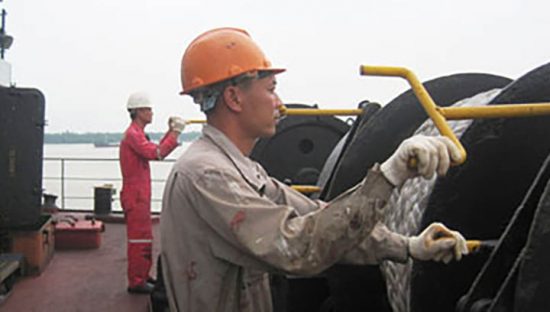
Credits to Nautilus International
Crew Providing Nations
The maritime industry isn’t uniquely prone to ethnicity pay gaps issue. In 2017 the Institute for Social and Economic Research, University of Essex, has unfolded a wide-scale research devoted to this topic in the UK. It has found that if born outside the UK, a man had no chance of equal earnings to White British men. The situation was particularly harsh for Pakistani and Bangladeshi. “Male Bangladeshi immigrants experienced the largest pay gap of 48%, meaning they earned around half what White British men earned.” The interesting fact is that these nationalities are the least paid in the maritime community as well.
However, let’s come back to the shipping industry statistics. According to ICS (International Chamber of Shipping), there are 5 main crewing countries (supplying both officers and ratings):
- The Philippines (the leading supplier of ratings in the world);
- China (the biggest provider of officers in the world and 2nd by ratings supply);
- Indonesia;
- the Russian Federation;
- Ukraine.
*In case you were wondering the general number of seafarers in the world is 1,647,500; of which 774,000 are officers and 873,500 are ratings. At present there is a shortage of approx. 16500 officers and over supply of 119 000 ratings.
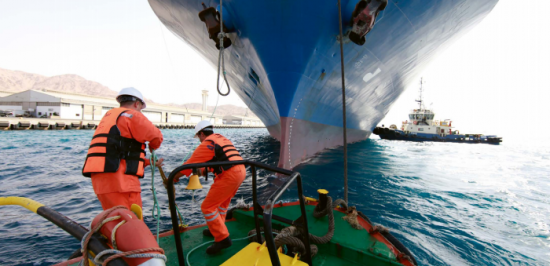
Salary Gaps’ Size
Therefore, seafarers’ community consists predominantly of these five nationalities, but despite being in majority they don’t lay down the rule. Look closer and you’ll discover other nationalities occupying more authoritative i.e. lucrative positions.
The common practice for EU or US ship owners is:
- Place their compatriots on the top 4 positions;
- Fill the rest officers’ vacancies with able Eastern European, Indian or Asian officers;
- Undercut rather shamelessly and get plenty of Asian ratings.
The salary scale for each vessel is defined by CBA (Collective Bargaining Agreement), but not all ship-owners (charitably speaking) adhere to it. We’ve compiled these indicative salary charts for your convenience with the help of Seaman Memories web portal:
Dry Cargo Ships, USD/per month
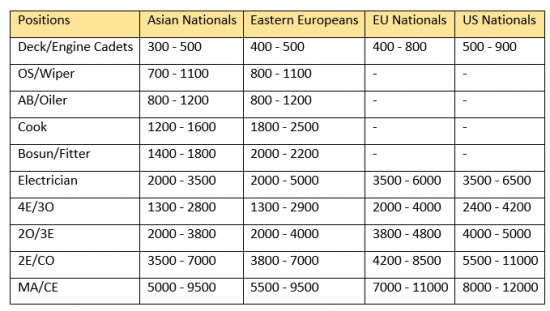
Tanker Vessels, USD/per month
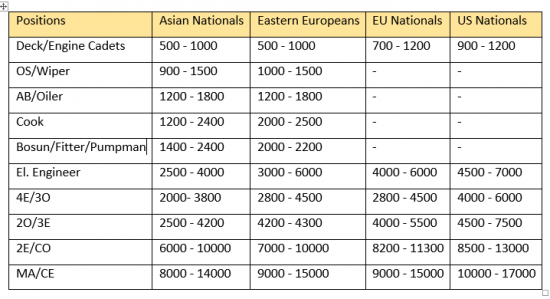
Figures are quite eloquent, but there are several conclusions that should be pointed put as well:
- As you can see Asian crew have lower start wage rates compared to other groups; however, differences are less prominent with the more advanced job offers.
- Although there is a general overlap of wage rates, top rates of EU and US officers are still higher.
- We have studied Eastern European salaries in our previous article Seafarers’ Salaries: Scale by the Maritime-zone.com more closely.
- Expertise and experience requirements for top positions often leave no room for ethnic preferences. However, there are might be some exceptions connected with safety (for example Masters -Norwegian speakers required to ensure enhanced safety near jack ups in the North Sea).
- There are special regulations that limit a number of international crew that can work under national flags; some countries impose other regulations (training, certification requirements) that limit a number of foreign crew.
- British RMT (national trade union covering maritime and railway workers) is concerned with salary gaps in maritime industry. Today the law treats shipping is as a ‘special case’ allowing nationality-based pay differentials. In November 2019 the government proposed to outlaw the practice of different basic rates for UK nationals and foreign seafarers.
The history demonstrates that the UK legislation activity usually turns out to be a precedent for other countries; and practices first adopted in the United Kingdom then spread other the world. Let us hope that the maritime community picks up the British initiative over equal wage rates, so we finally see the end of salary gaps in the maritime industry and become truly international.

